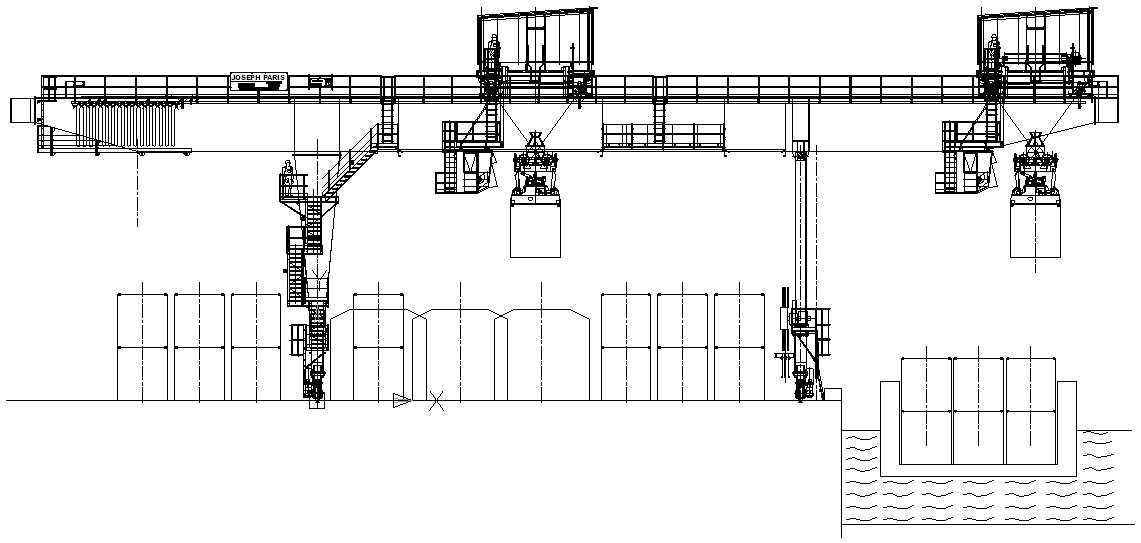Mining is one of the most dangerous industries in the world, requiring rigorous safety measures to protect workers and minimize risks. Ensuring mining engineering safety is a multi-faceted process that involves risk assessment, safety management systems, training, monitoring, innovation, and communication. Each of these components plays a crucial role in creating a safe mining environment. Here’s how mining operations can enhance safety and mitigate potential hazards.
1. Conduct Thorough Risk Assessments
One of the first steps in ensuring safety in mining is conducting a comprehensive risk assessment. This process involves identifying, analyzing, and evaluating potential hazards and their consequences in every stage of the mining operation. A well-structured risk assessment helps prioritize the most significant risks and enables the development of control measures to either reduce or eliminate them.
Before any mining project begins, risk assessments must be conducted and should be continuously updated throughout the project’s lifecycle. Tools like checklists, risk matrices, and specialized software can assist in identifying risks. By understanding the nature of potential hazards—whether they involve geological instability, equipment failure, or environmental impacts—companies can implement proactive solutions to safeguard workers and operations.
2. Establish a Safety Management System (SMS)
A comprehensive Safety Management System (SMS) is essential for maintaining a safe work environment in mining engineering. An SMS integrates policies, procedures, and practices designed to prevent accidents, encourage a positive safety culture, and ensure compliance with regulations. Covering all aspects of mining operations, from planning to rehabilitation, an SMS provides a structured framework for managing safety.
Industry standards such as ISO 45001 or ICMM’s 10 Principles guide the development of an effective SMS. These frameworks not only address operational safety but also emphasize environmental stewardship, worker well-being, and regulatory adherence. A well-implemented SMS ensures that safety is ingrained in every aspect of the mining operation.
3. Provide Continuous Safety Training
Another cornerstone of mining safety is continuous safety training. Regular training ensures that workers and managers are equipped to recognize hazards, follow safety protocols, and effectively use personal protective equipment (PPE). Training must be tailored to the specific needs of the mining site, whether underground or surface-level, and should be delivered through engaging and interactive methods.
Using modern training techniques like simulations, videos, and hands-on activities can increase the effectiveness of safety education. Equipping the workforce with the knowledge and skills to safely perform their tasks significantly reduces accidents and incidents.
4. Implement Safety Monitoring
Safety monitoring involves tracking and analyzing key safety indicators to ensure safety standards are being maintained. Metrics like accident rates, injury severity, near-misses, and safety audits provide valuable insights into the effectiveness of safety measures. Regular safety inspections and audits help to identify areas that need improvement, ensuring that the safety management system remains robust and effective.
Utilizing real-time dashboards, reports, and feedback loops allows for continuous monitoring and timely adjustments, ensuring that potential risks are identified and addressed before they escalate.
5. Foster Safety Innovation
Mining operations benefit greatly from safety innovation, which leverages new technologies and approaches to reduce risks and enhance worker safety. Innovations such as automation, robotics, drones, sensors, and artificial intelligence (AI) can minimize human exposure to dangerous conditions and optimize operational safety.
For example, autonomous vehicles can transport materials in hazardous areas, and drones can inspect mine shafts without risking workers’ lives. These innovations not only improve safety but can also increase operational efficiency. Forward-thinking companies invest in research and development to stay at the cutting edge of mining safety technology.
6. Ensure Effective Safety Communication
Finally, effective safety communication is essential for ensuring that all stakeholders—from workers to management—are aware of the safety standards and protocols in place. Clear communication of safety expectations, procedures, and feedback helps build a culture of safety and accountability. Additionally, sharing lessons learned from incidents or near-misses encourages proactive behavior across the organization.
Safety communication should be consistent and multi-channel, utilizing meetings, newsletters, signs, and even social media to ensure that safety information is widely distributed and understood by everyone on site.
Conclusion
Ensuring safety in mining engineering requires a comprehensive and proactive approach. By conducting detailed risk assessments, maintaining a robust Safety Management System, providing continuous safety training, monitoring safety performance, embracing innovation, and fostering clear communication, mining operations can minimize hazards and protect their workforce. With these strategies in place, companies can promote a culture of safety that not only prevents accidents but also boosts operational efficiency and sustainability.



























